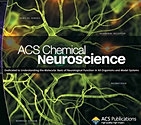
“The endocannabinoid system has been shown to mediate beneficial effects on gastrointestinal inflammation via cannabinoid receptors 1 (CB(1)) and 2 (CB(2)).
These receptors have also been reported to activate the MAP kinases p38 and c-Jun NH(2)-terminal kinase (JNK), which are involved in early acinar events leading to acute pancreatitis and induction of proinflammatory cytokines.
Our aim was to examine the role of cannabinoid receptor activation in an experimental model of acute pancreatitis and the potential involvement of MAP kinases.
The unselective CB(1)/CB(2) agonist HU210 ameliorated pancreatitis in wild-type and CB(1)-/- mice, indicating that this effect is mediated by CB(2).
Furthermore, blockade of CB(2), not CB(1), with selective antagonists engraved pathology.
Stimulation with a selective CB(2) agonist attenuated acute pancreatitis and an increased activation of p38 was observed in the acini.
With use of MK2-/- mice, it could be demonstrated that this attenuation is dependent on MK2. Hence, using the MK2-/- mouse model we reveal a novel CB(2)-activated and MAP kinase-dependent pathway that modulates cytokine expression and reduces pancreatic injury and affiliated complications.”









